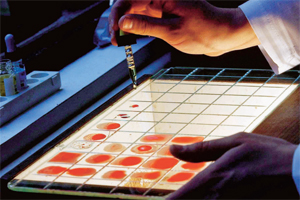Blood flows through our extensive network of conduits. An adult human being has an average of a little over 5 liters.
Although it might sound odd, blood is a tissue, just like cartilage or bone: however, thanks to a liquid base called plasma, it can move millions of figurative elements (blood components), that form an essential part of its structure, for example, red blood cells, white blood cells and platelets.
Blood has various functions:
– It distributes the nutrients needed for the development of life throughout the whole body
– It transports thousands of hormone molecules and proteins that are essential for the body to function properly.
– It removes waste composed of carbon dioxide and nitrogen remains from our tissues.
– It captures oxygen molecules in the lungs and carries them to ever cell in the body.
– It regulates the temperature of the body distributing heat and maintaining and average of 37°C. When a sudden change of temperature happens, the capillaries (blood vessels that connect arteries with veins) act immediately in order to regulate said change.
– It protects the body against pathogen agents and diseases. Blood also has immunologic or defensive functions; white blood cells or leucocytes attack any foreign element that enters the body.
Lymph
There is a tissue whose function has a direct relationship with the bloodstream, it is called lymph. It is more abundant than blood and also travels along the human body transporting molecules. It contains a large amount of leucocytes (white blood cells) and is the largest transporting conduit of these kinds of cells. Their mission is to defend the body against any pathogen agent. Lymph is made of a clear liquid, poor in proteins and very rich in lipids. It is considered a complementary fluid of the blood and it is the main component of the lymphatic system, which we shall discuss further in the future.
Its most important functions are: to gather and bring back interstitial liquid (which is contained among the gaps between cells); to defend the body from infections and to absorb food nutrients and then carry them -and oxygen- to areas where there are no capillary vessels.








 Muere Evita
Muere Evita